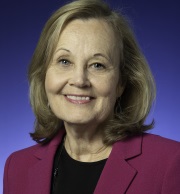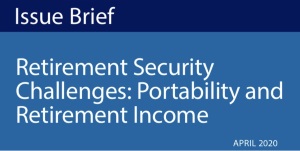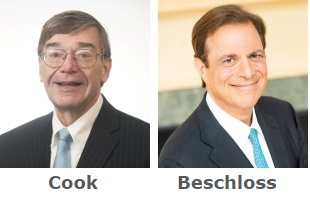The Retirement Report, Spring 2020
Vol 3 | No. 2
Academy Wraps Up Successful Three-Part ‘Retirement in America’ Webinar Series
The Academy’s Pension Practice Council (PPC) wrapped up its “Retirement Plan Coverage in America” webinar series this spring with the third and final session on May 27 looking at private-sector plans, state initiatives and opportunities to expand coverage. The successful and engaging series covered wide-ranging aspects of retirement and pension plans in America and included impacts to systems and plans from the ongoing coronavirus pandemic.
The first two webinars, held in March and April, covered multiemployer plans and public pension plans, respectively. With just over half of American workers participating in employer-sponsored plans, presenters covered financial status data along with general background on how plans are operated and funded, the governance structures under which they operate, and recent public policy proposals and actions.

Stone“The purpose of this series was to provide insights for those who have expertise with these plans and those who want to increase their knowledge of the systems that provide for the ability of American workers to have a secure retirement,” said Academy Senior Pension Fellow Linda K. Stone, who moderated the three webinars.
“While each of the systems covered in the series is facing challenges—some unique, some similar, especially with the impacts we have seen so far from COVID-19—they are a critical component of security for many American workers and their families,” Stone said. “Public policy actions can make sure that more Americans have the ability to save through an employer-sponsored plan.”
Part One—Focus on Multiemployer Plans
 Focus on Multiemployer Plans,” held on March 24, featured Christian Benjaminson, chairperson of the Academy’s Multiemployer Plans Committee; Joe Hicks, the committee’s vice chairperson; and committee member Susan Boyle. The speakers discussed who is covered by those plans, how the plans are regulated, current issues impacting the plans and their participants, and current reform proposals.
Focus on Multiemployer Plans,” held on March 24, featured Christian Benjaminson, chairperson of the Academy’s Multiemployer Plans Committee; Joe Hicks, the committee’s vice chairperson; and committee member Susan Boyle. The speakers discussed who is covered by those plans, how the plans are regulated, current issues impacting the plans and their participants, and current reform proposals.
Stone noted that while the recently passed Setting Every Community Up for Retirement Enhancement Act (SECURE Act) would boost percentages of American workers participating in retirement plans, currently only 52% of private-sector workers participate in an employer-sponsored retirement plan.
Benjaminson said at the outset that “the effect that the COVID-19 pandemic has had on the markets recently will certainly affect pension-plan funding, and we’ll have to see how the markets and the economy react before we know the true extent.”
Boyle gave examples of workers’ benefits and participation/contribution rates and covered basic Employee Retirement Income Security Act of 1974 (ERISA) and Pension Protection Act of 2006 (PPA) funding rules. Hicks covered withdrawal liability impacts on the Pension Benefit Guaranty Corporation (PBGC), including critical and declining plans within PBGC participant plans, and the role of the Multiemployer Pension Reform Act of 2014 (MPRA) on those plans.
Presenters also discussed proposed legislative measures to address plan shortfalls and answered more questions about the effect of the COVID-19 pandemic on solvency going forward.
Part Two—Public Pension Plans
 Focus on Public Pension Plans,” held on April 23, presenters discussed public pension plans covering state and local government workers and provided overviews of such plans’ purpose and the unique issues facing them.
Focus on Public Pension Plans,” held on April 23, presenters discussed public pension plans covering state and local government workers and provided overviews of such plans’ purpose and the unique issues facing them.
Speakers were PPC Vice Chairperson Sherry Chan, who is also chairperson of the Public Plans Committee; Randall Dziubek, deputy chief actuary, valuation services, with the California Public Employees’ Retirement System; Todd Tauzer, vice chairperson of the Public Plans Committee; and committee member Elizabeth Wiley. They weighed in on who is covered by these plans, how they are regulated, and current issues impacting these plans and their participants.
More than 80% of public employees have access to one or more public pension plans and over 25 million people are members or beneficiaries of public pensions. Unlike U.S. multiemployer and single-employer plans, there is limited federal oversight of public plans. Each state generally determines how public plans operate in that state, resulting in a patchwork of rules governing benefit guarantees and funding requirements, with each state operating as “practically its own sovereign mini-nation,” Tauzer said.
Some public employers offer both defined benefit (DB) and defined contribution (DC) plans. While it is uncommon for a public plan to only offer DC plans, many systems face pressure to limit or eliminate DB plans. “It remains to be seen if we will see a movement to DC plans in the public sector like we have seen in the private sector,” Dziubek said.
Public pension plans also often have features uncommon in the private sector, including cost-of-living adjustments (COLAs), Deferred Retirement Option Plans (DROPs), generous death and disability benefits, and gain sharing, as well as a trend toward variable benefits, panelists said. “The debate over whether public pension benefits are in general too rich has valid points on both sides … and will continue to be debated,” Dziubek said.
Chan provided an overview of current trends and issues facing public pension plans and discussed media coverage of public plans issues she has experienced in her high-profile role as New York City’s chief actuary.
During the Q&A, attendees were primarily interested in the effects of the ongoing COVID-19 pandemic. Presenters identified asset and revenue drops, and service-connected deaths and disabilities, as among the key emerging challenges to public plans.
Part Three—Private Sector Plans, State Initiatives, and Opportunities to Expand Coverage
 Focus on Private-Sector Plans, State Initiatives, and Opportunities to Expand Coverage,” held May 27, was moderated by Senior Pension Fellow Linda K. Stone and featured speakers Academy Pension Vice President Tim Geddes; Rob Austin, vice president and head of research wealth solutions and strategy at Alight Solutions; Angela Antonelli, research professor and executive director of Georgetown University’s Center for Retirement Initiatives; and Mark Iwry, a nonresident senior fellow at the Brookings Institution and a former senior adviser to the Secretary of the Treasury.
Focus on Private-Sector Plans, State Initiatives, and Opportunities to Expand Coverage,” held May 27, was moderated by Senior Pension Fellow Linda K. Stone and featured speakers Academy Pension Vice President Tim Geddes; Rob Austin, vice president and head of research wealth solutions and strategy at Alight Solutions; Angela Antonelli, research professor and executive director of Georgetown University’s Center for Retirement Initiatives; and Mark Iwry, a nonresident senior fellow at the Brookings Institution and a former senior adviser to the Secretary of the Treasury.
Stone shared some statistics for private sector workers which showed that only 52 percent of these workers are participating in an employer sponsored plan. The numbers for part-time workers and those with the lowest 25 percent of income have participation rates that are significantly lower.
Geddes opened with an overview of private-sector defined benefit (DB) plans, outlining the decline in DB plans over the past three-and-a-half decades with plan count decreasing 70% over the 15 year period from the late 1980’s through the 1990’s . He noted that private-sector single-employer pension plans are reasonably well funded against plan funding targets determined based on funding relief. He noted there have been “many conversations in the past few months” since the outset of the coronavirus pandemic about retirement strategies. Plan sponsors are continuing to look to exit defined benefit plans.
Austin covered the rise of defined contribution (DC) plans in the past decade since the Great Recession, as such plans grew with features like immediate eligibility, auto-enrollment, and auto-escalation. Auto-enrollment plans rose to 74 percent in 2019 from 58 percent a decade earlier, and the average participation in such plans jumped to 87 percent from 62 percent. “DC plans are the backbone of retirement saving for most people” but “they’re not perfect,” he said.
Antonelli noted that the recent COVID-19 pandemic-related economic downturn “has underscored and highlighted what we know about the reality of the financial fragility of so many American families. … The challenge as we go forward is to see what damage we have experienced with respect to retirement savings and to consideration of the role that retirement savings plays in helping to weather economic shocks.” She also mentioned factors such as student debt, as to why two-thirds of millennials having little to no retirement savings, and noted the retirement challenges faced by women. (The latter topic was a focus of a plenary session at the Academy’s Annual Meeting & Public Policy Forum last year). She also discussed the 12 state-facilitated individual retirement account (IRA) programs (11 states and 1 city) and their role in expanding coverage, most of which are auto-IRA /“Secure Choice” models.
Iwry said the recently passed SECURE Act did not provide much retirement coverage expansion and that open MEPs (multiple employer plans) would only expand modestly. He noted there has been bipartisan support for an auto-enrollment IRA bill, and that some states have run pilot programs with that concept. “The automatic enrollment in IRAs, which both Republicans and Democrats have co-sponsored, would be the one thing that would make a major breakthrough in coverage in the United States,” he said.
Slides and audio are available free for logged-in Academy members.
Social Security Committee Releases Issue Brief on 2020 Trustees Report
 An Actuarial Perspective on the 2020 Social Security Trustees Report, following the release of the annual trustees report in April. The report—which does not reflect any impacts from the COVID-19 pandemic—shows that the combined Old-Age, Survivors, and Disability Insurance program of Social Security will only have sufficient resources to fully cover benefits until 2035, consistent with last year’s trustees report.
An Actuarial Perspective on the 2020 Social Security Trustees Report, following the release of the annual trustees report in April. The report—which does not reflect any impacts from the COVID-19 pandemic—shows that the combined Old-Age, Survivors, and Disability Insurance program of Social Security will only have sufficient resources to fully cover benefits until 2035, consistent with last year’s trustees report.
“The 2020 trustees report shows that, even before accounting for any effects of the COVID-19 pandemic—which is expected to result in lower tax income to Social Security—Social Security faces serious financial challenges based on an objective actuarial analysis of how demographic and economic trends are projected to play out under the current program design,” said Linda K. Stone, the Academy’s senior pension fellow. “Congress will have a wider range of options, with the potential for a more gradual approach to benefits or revenue changes, the sooner that it addresses Social Security’s long-term solvency issues.”
The report also notes that:
-
The actuarial deficit increased from 2.78% of taxable payroll to 3.21% of taxable payroll, due to a change in assumptions caused by lower inflation, lower interest rates, lower fertility, and the repeal of the Affordable Care Act (ACA) excise tax on high-cost employer-sponsored group health insurance plans. This repeal added 0.13 percentage points to the 75-year actuarial deficit.
-
If timely changes are not made, cutting benefits for future beneficiaries only will not be enough to achieve solvency. Instead, benefits for those retirees already receiving benefits would have to be cut or Social Security’s income would need to be increased through taxes.
The issue brief concludes that the sooner a solution is implemented to ensure the solvency of Social Security, the less disruptive a required solution will need to be.
Cross-Practice Webinar Looks at COVID-19
 webinar that took a cross-practice perspective on known and unknown risks and challenges actuaries may need to focus on that have been brought on by the COVID-19 pandemic.
webinar that took a cross-practice perspective on known and unknown risks and challenges actuaries may need to focus on that have been brought on by the COVID-19 pandemic.
The Academy’s four practice-area senior fellows presented, along with the chairperson of the ERM/ORSA Committee, who addressed risk management and financial reporting considerations. This cross-practice perspective is one that the Academy is uniquely qualified to provide to the profession at large given our broad base of members from all practice areas, as well as our mission emphasis on the public policy and professionalism aspects that touch the lives of all Americans through the work of our members.
Senior Pension Fellow Linda K. Stone covered the pandemic’s potential effects on retirement and retirement security.
“COVID-19 has tested, or will test, every aspect of the retirement system—from Social Security to the plans that cover many workers, whether they are corporate plans, multiemployer plans, or public pension plans,” she said.
As with the other practice areas, the pandemic’s impact on pension systems will take some time to unfold, Stone said, as some employers have already deferred or cut back their contributions to employees’ retirement plans. “Those unemployed are facing not only the loss of income but the loss of employer-provided benefits as well,” she said. “This current economic shock will deepen the retirement savings challenge.”
Americans were challenged to save enough for a secure retirement before the pandemic, and “COVID-19 has put security more out of reach for many who are struggling from paycheck to paycheck—or now, paycheck to no paycheck,” she said.
Slides and audio are available for logged-in Academy members. Also, be sure to check out our COVID-19 Resources webpage—there you’ll find academic articles, actuarial resources, federal rules and regulations, Academy publications, and much more.
PPC, Multiemployer Plans Committee Comment on ‘HEROES Act’
The Pension Practice Council (PPC) and the Multiemployer Plans Committee submitted a
Shapiro Takes Part in ERISA Panel

Multiemployer Plans Committee Releases Issue Brief
The Multiemployer Plans Committee released an issue brief, Determining Withdrawal Liability for Multiemployer Pension Plans: A Range of Approaches to Actuarial Assumptions, that explores current practices and approaches to the selection of withdrawal liability interest rates.
The issue brief notes that:
-
There is a diversity of practice across the multiemployer actuarial community in the selection of the interest rate used for determining employer withdrawal liability, and the selection of these rates has received increased scrutiny in recent years;
-
Common approaches to selecting the withdrawal liability interest rate include the use of the expected return on plan assets, market-observed interest rates, and a blend of these two approaches; and
-
Actuaries select withdrawal liability assumptions through a combination of relevant facts and circumstances, the actuarial standards of practice, and their professional judgment.
Retirement Security Issue Brief Released
 Retirement Security Challenges: Portability and Retirement Income, that considers potential ways to optimize portability and personal management of retirement assets, income, and benefits.
Retirement Security Challenges: Portability and Retirement Income, that considers potential ways to optimize portability and personal management of retirement assets, income, and benefits.
The issue brief notes that:
-
Today’s mobile workforce faces challenges in keeping track of retirement savings accumulated from different employers and converting those savings into sustainable retirement income;
-
Potential solutions include the creation of a centralized registry for benefits, providing periodic benefit statements, and offering basic education on retirement-related topics at different career stages to help demystify the retirement planning process; and
-
Secure retirement income can be facilitated by easy access to low-cost investments offering an opportunity for growth while managing risk, and making available at retirement a variety of easy-to-initiate, institutionally priced income options.
Annual Meeting to Feature Historian Michael Beschloss, Political Analyst Charlie Cook
Registration is open for the Academy’s 2020 Annual Meeting and Public Policy Forum, which will feature two highly respected speakers who will weigh in on this year’s elections, just days after they occur.


Noted presidential historian Michael Beschloss will be the keynote speaker. He will provide attendees with context and insights on the presidency and the presidents who have held the office—including the winner of the 2020 presidential election, to be held just two days preceding the Annual Meeting. Charlie Cook, a highly respected impartial analyst of trends in American politics and elections, will break down the political reality of how the historic elections played out, including an analysis of the congressional makeup.
Pension Breakout Sessions Set
Pension breakout sessions include:
Retirement in the 21st Century—Individual Responsibility in the Age of the 401(k): The retirement landscape has changed dramatically over the past three decades. Defined contribution plans now dominate as the primary retirement vehicle in the private sector. The SECURE Act made much-needed progress enabling reliable income solutions for participants in defined contribution plans, but employers must decide to implement the options the Act offers. The session will discuss potential response to the SECURE Act by financial providers, employers, and participants. The session will also consider potential further enhancements that could form a part of SECURE 2.0 to further improve access to reliable retirement income from these plans.
Social Security—Reinforcing the Foundation of US Retirement in a Time of Uncertainty: Social Security is the first layer of the majority of Americans’ retirement strategies. For many Americans, Social Security can be the only source of reliable income in retirement. Yet, trustees’ reports consistently show the existing financing under current law is forecasted to be insufficient to fund scheduled benefits. A wide variety of proposed changes to Social Security aim to modify benefits and address the shortfall in some way. This session will discuss forecasts of Social Security solvency, the impact that select proposals could have on solvency, and a discussion of other potential paths forward.
PBGC—A Tale of Two Funds: The Pension Benefit Guaranty Corporation (PBGC) multiemployer and single-employer funds came into the economic crisis in vastly different positions. The decline in economic activity, expected rise in bankruptcies, deterioration of equity values, and even lower interest rates are all likely to negatively impact both funds. The session will provide an update on the forecasted solvency of both funds, the potential participant impact of the funds’ circumstances, and the legislative efforts affecting PBGC.
The Annual Meeting and Public Policy Forum will be held Nov. 5–6 at the Fairmont Hotel in Washington, D.C. Continuing education credit will be available. Discounted early registration rates are now available—register today.
Register With Confidence for Academy Events: New Cancellation Policy
The Academy is monitoring the ongoing coronavirus pandemic situation and adhering to the guidelines surrounding in-person events. As of now, we are moving forward with our fall event schedule—including the marquee Annual Meeting and Public Policy Forum—we also want our members to be able to register with confidence. The Academy now has cancellation policies in place to accommodate any necessary change to your registration resulting from a continuation of the current pandemic situation.
You can find the cancellation policy for the Annual Meeting registration page here.
In This Issue
- PPC’s Three-Part Retirement Webinar Series Wraps Up
- Issue Brief—2020 Social Security Trustees Report
- Cross-Practice Webinar—COVID-19
- PPC Comments to House Leadership
- Shapiro Speaks at ERISA Forum
- Multiemployer Plans Issue Brief
- Retirement Security Issue Brief
- Annual Meeting and Public Policy Forum
- Legislative/Regulatory Update
- In the News
Following is an update of key federal and state retirement- and pension-related legislative and regulatory activity.
Federal Legislative Activity
-
A coronavirus recovery bill—the Health and Economic Recovery Omnibus Emergency Solutions Act (the “HEROES Act”)—was passed by the U.S. House of Representatives on May 15. The bill now moves to the Senate for consideration. The Academy will continue to track the progress, if any, of this legislation. To see more information on the retirement provisions included in the legislation, read the Academy alert.
-
Congress passed and the president signed into law H.R. 748, the CARES Act, in late March in response to the economic downturn caused by the COVID-19 pandemic. Among large appropriations measures, the legislation contains several provisions related to retirement plans. The bill waives both the 10% penalty tax on early withdrawals from defined contribution retirement plans and individual retirement accounts (IRAs) up to $100,000 and an increase in the ceiling on loans against a retirement plan to $100,000 for a limited time for those eligible for a coronavirus-related distribution. It also provides a waiver on required minimum distributions for certain 401(k) and IRAs for 2020. Read the Academy alert.
-
Rep. John Larson introduced a bill in late March that was referred to the U.S. House Ways and Means Committee. H.R. 6356, The Emergency Social Security Benefits Improvement Act, was introduced in response to the economic ramifications of the pandemic. It contains measures to provide a temporary average 2% benefit for current Social Security beneficiaries and it would increase the threshold for Special Minimum Benefit to 125% of the federal poverty level among other provisions. The Academy will continue to track the progress of this legislation.
-
Sen. Rand Paul introduced a bill in the Senate Finance Committee in March that would amend the Internal Revenue Code to terminate required minimum distributions under tax-favored retirement plans. The Academy will continue to track the progress of this legislation.
-
Sens. Bernie Sanders and Chris Van Hollen introduced a bill in late February that has been referred to the Senate Finance Committee that would amend the Internal Revenue Code to restrict the tax benefits of executive deferred compensation and increase disclosure requirements for executive pensions. The Academy will continue to track the progress of this legislation.
-
Sens. Ted Cruz and Bill Cassidy introduced a bill on March 5 that was referred to the Senate Finance Committee. The Equal Treatment of Public Servants Act of 2020 would replace the current formula for calculating Social Security benefits, the Windfall Elimination Provision (WEP). Identical legislation was introduced by Rep. Kevin Brady in the House last July. The Academy will continue to track the progress of this legislation.
State Legislative and Regulatory Activity
-
Alabama Gov. Kay Ivey signed a bill into law on May 9 amending the city of Tuscaloosa’s county police officer and firefighter retirement system by increasing the time of service for eligibility and increasing member and city contributions by 0.5% annually and 1% annually, respectively.
-
Colorado Gov. Jared Polis signed a bill into law on April 1 that makes several changes to public pension plans administered by the Fire and Police Pension Association, including: appends a 0.5-percentage-point increase in the employer contribution rate every year from 2021 through 2028; and appropriation of an additional lump-sum payment to the FPPA to fund the unfunded liabilities of the death and disability benefits for pension recipients, among other provisions.
-
Washington Gov. Jay Inslee signed a bill into law on March 26, increasing the annual fee for each member of municipal fire departments from $30 to $50 toward the contribution to the volunteer firefighters’ and reserve officers’ relief and pension system. Inslee also signed a signed another bill into law on March 25, creating municipality firefighters’ pension boards to determine salary contributions to law enforcement pension plans.
-
Indiana Gov. Eric Holcomb signed a signed a bill into law on March 18, providing that members of the public employee’s retirement fund (PERF), the Indiana State Teachers’ Retirement Fund, or the legislators’ defined contribution plan who meet certain age and service requirements may withdraw from the member’s annuity savings account without consequence to the member’s pension benefit under the fund and without separating from a covered position. Holcomb signed a separate bill into law on March 30, increasing the death benefit of members of certain police and firefighter pension funds, among others, from $150,000 to $225,000.
-
Wyoming Gov. Mark Gordon signed a bill into law on March 13, increasing contributions to the volunteer firefighter, EMT, and search and rescue pension account up to 100% of the gross premium tax levied upon fire insurance premiums.
-
The California Secure Choice Retirement Savings Investment Board—the oversight board for California’s auto-IRA savings program, CalSavers—voted on April 15 to delay the registration deadline from June until Sept. 30 for employers with 100 or more employees.
-
Senior Pension Fellow Linda K. Stone was quoted in a Plan Sponsor story on the implications of the coronavirus pandemic for pension risk transfers.
-
The Sacramento Bee, The Charlotte Observer, Roll Call, and other media outlets featured comments from Pension Committee member Aaron Weindling in a story on a congressional proposal to provide financial relief to community newspapers that contains pension provisions.
-
The Auburn Citizen (N.Y.) cited the Academy’s analysis of multiemployer pension plans in an article noting that New York lawmakers are urging congressional leaders to take action on the multiemployer crisis.
-
Insurance News Net cited the Pension Committee’s March 9 comment letter to the IRS on mortality tables.
-
A Reason Foundation opinion piece on Massachusetts public employee pensions cited the Pension Practice Council’s issue brief, The 80% Pension Funding Standard Myth.
-
Cleveland radio station WTAM cited the Academy’s research on longevity risk for aging couples.
-
A report from the Center on Budget and Policy Priorities cited the Social Insurance Committee’s 2003 comment letter to Social Security trustees about a technical panel recommendation on measuring unfunded obligations.
